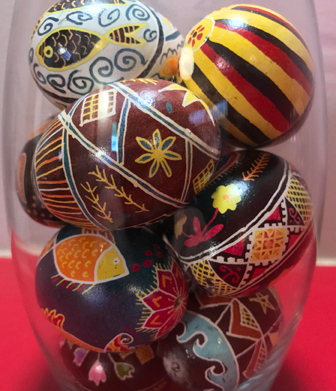Easter is an "egg-citing" time at Java Post!
Topics: Java Blog
What's a pysanka? No it's not a pyinstant pycoffee pyowder. A pysanka (or pysanky if you're talking plural) is a colourful Ukrainian Easter egg, decorated with traditional folk designs using a "wax-resist" method. The word "pysanka" comes from the verb "psaty" (to write), as the designs are not painted on the eggs, but written with beeswax and then dipped into various coloured dyes.
Pysanky date from Pagan times, and were originally considered to be magical. As the folklore goes, one year winter came very suddenly and the birds didn't have time to migrate south. The villagers took the freezing birds inside and cared for them until it was warm enough for the birds to leave. When the birds returned, they left a decorated egg at each household, as a sign of thanks.
One of our Java Post colleagues, Maureen Bennett, gives how-to workshops on pysanky and she made the eggs you see in this post. Beeswax is applied to the eggs with a special tool called a kistka. The egg is then placed in progressively darker dyes. Whatever parts of the egg are covered in beeswax stay the colour of the previous dye (or the original eggshell white, in the case of the first wax application). It takes a lot of time and skill to create these colourful eggs.
And no, these Easter eggs are not made of chocolate. Even if they were, they'd be too beautiful to eat.
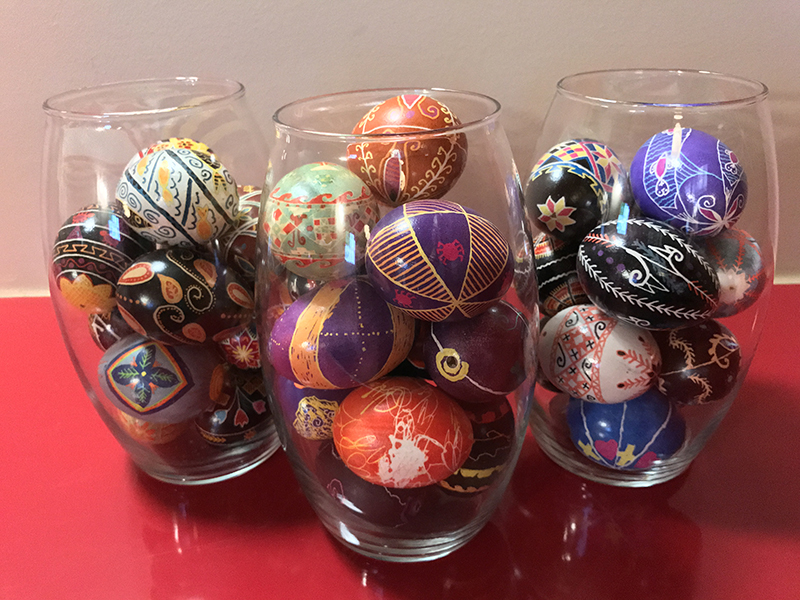
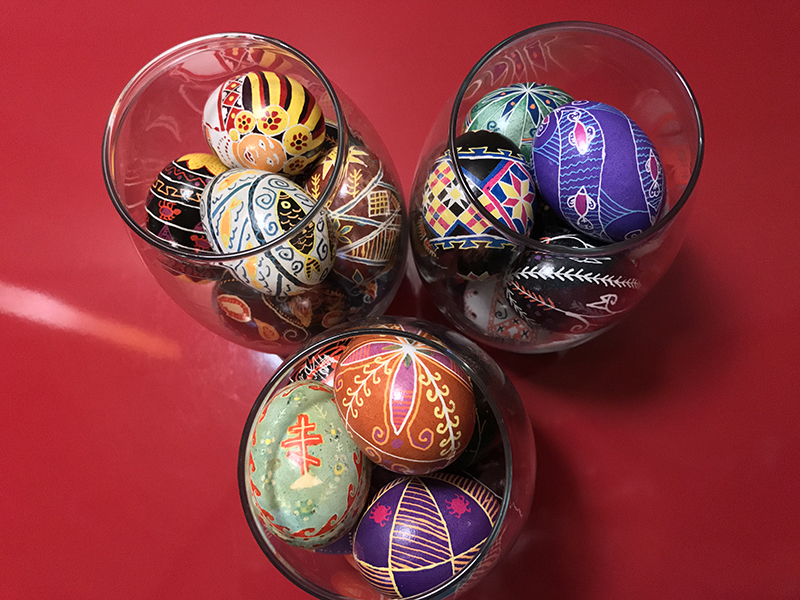
Below are a couple of photos showing several stages of creating a pysanka.
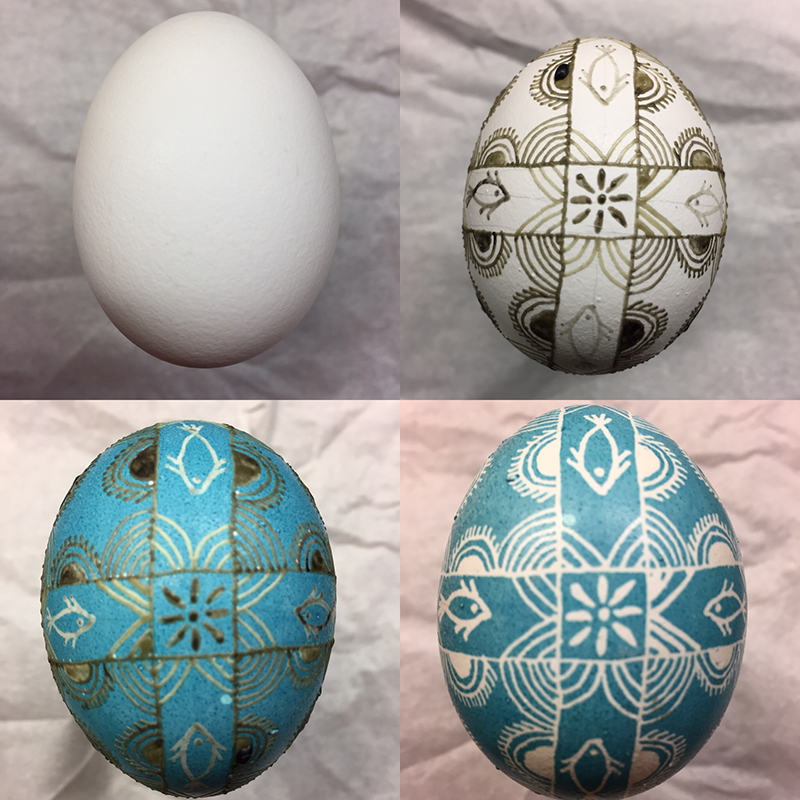
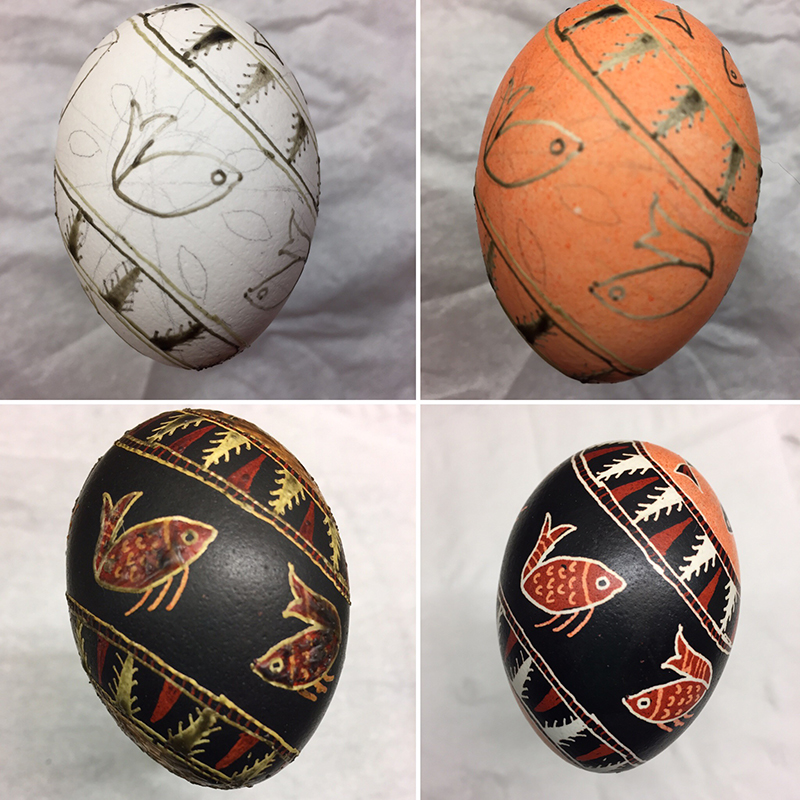
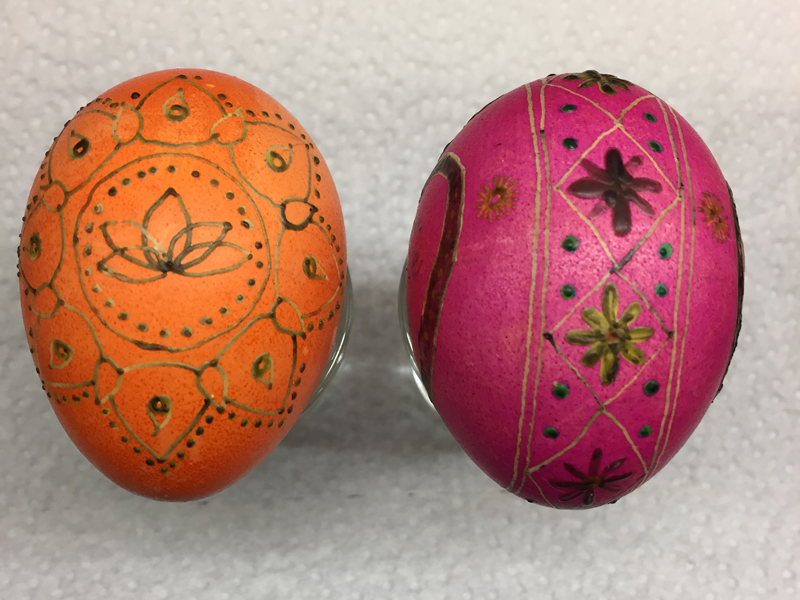
And, as you see below, if you're going to all the time and effort to create a colourful pysanka, you might as well get a matching manicure.
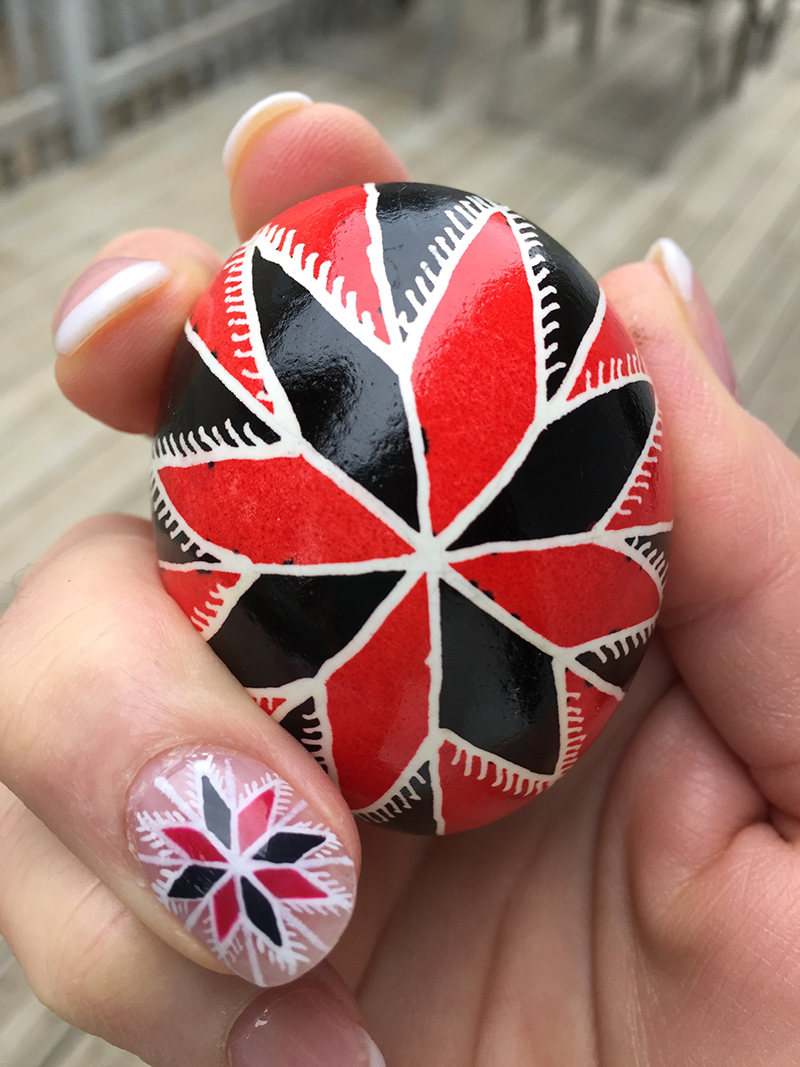
Pysank you for reading this post. Now, get back to work and don't get up to any hanky-pysanky. :-)


